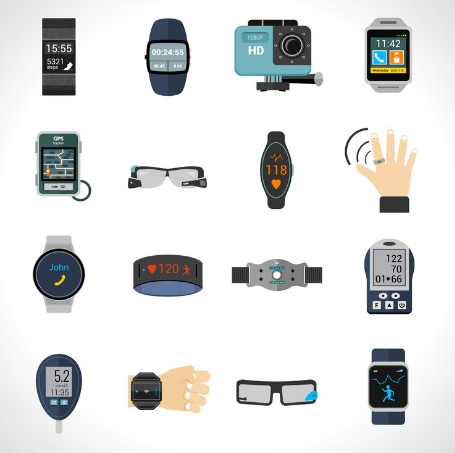Introduction: In the era of rapid technological advancement, 5G technology stands out as a game-changer in the realm of connectivity. As the fifth generation of wireless technology, 5G promises to revolutionize the way we communicate, collaborate, and access information. With its unparalleled speed, low latency, and massive capacity, 5G is set to transform industries, empower innovation, and drive economic growth. In this comprehensive exploration, we delve into the fast-paced world of 5G technology, uncovering its capabilities, applications, and the transformative impact it is poised to have on the global landscape.
Understanding 5G Technology: 5G technology represents a quantum leap forward in wireless communication, offering unprecedented speed, reliability, and connectivity compared to its predecessors. At its core, 5G relies on advanced radio technologies, spectrum allocation, and network architecture to deliver ultra-fast, low-latency connectivity to a multitude of devices and applications. Unlike previous generations of wireless technology, which primarily focused on connecting people, 5G is designed to support the exponential growth of connected devices, from smartphones and tablets to Internet of Things (IoT) sensors and autonomous vehicles.
Key Features of 5G:
- Gigabit-Speed Data Rates: 5G networks are capable of delivering peak data rates exceeding 10 gigabits per second (Gbps), enabling lightning-fast downloads, streaming, and content delivery.
- Ultra-Low Latency: With latency reduced to milliseconds, 5G technology enables real-time communication and responsiveness critical for applications such as gaming, virtual reality (VR), and autonomous vehicles.
- Massive Connectivity: 5G networks can support a significantly higher density of connected devices, making it ideal for IoT deployments and smart city initiatives with billions of interconnected sensors and gadgets.
- Network Slicing: partitioning network resources into virtual slices, 5G enables operators to customize service delivery for specific applications, industries, or user groups, ensuring optimal performance and efficiency.
- Enhanced Reliability and Resilience: 5G networks are designed to be more robust and resilient, with features such as network densification, beamforming, and dynamic spectrum sharing to mitigate interference and ensure consistent connectivity even in dense urban environments.
Applications of 5G Technology:
- Enhanced Mobile Broadband (eMBB): 5G technology enables faster downloads, smoother streaming, and higher-quality multimedia experiences on smartphones, tablets, and other mobile devices, enhancing user experiences and productivity.
- Internet of Things (IoT): With its ability to connect a massive number of IoT devices, 5G facilitates the deployment of smart city initiatives, industrial automation, environmental monitoring, and connected healthcare solutions, driving efficiency and sustainability.
- Autonomous Vehicles: 5G’s low latency and high reliability are critical for enabling real-time communication and coordination among autonomous vehicles, paving the way for safer and more efficient transportation systems, reducing accidents, and optimizing traffic flow.
- Augmented Reality (AR) and Virtual Reality (VR): 5G unlocks immersive AR and VR experiences by delivering high-resolution content and ultra-low latency, enabling applications such as remote training, virtual meetings, and interactive gaming, transforming entertainment and education.
- Telemedicine and Remote Surgery: The high reliability and low latency of 5G networks enable real-time remote consultations, diagnostic imaging, and even remote surgery, revolutionizing healthcare delivery and patient care, particularly in underserved areas.
Challenges and Considerations: Despite its transformative potential, 5G technology faces several challenges and considerations:
- Infrastructure Deployment: Building the necessary infrastructure, including small cells, fiber-optic cables, and base stations, is a massive undertaking that requires significant investment and coordination among stakeholders.
- Spectrum Allocation: Securing sufficient spectrum for 5G networks is essential to meet growing demand for wireless bandwidth, but spectrum allocation policies and regulations vary across regions and can impact network performance and coverage.
- Security and Privacy: As connectivity expands to encompass more devices and applications, concerns about data security, privacy, and potential cyber threats become increasingly paramount, necessitating robust security measures and protocols.
- Digital Divide: Ensuring equitable access to 5G technology is crucial for bridging the digital divide and preventing further disparities in connectivity, particularly in rural and underserved communities.
- Regulatory Frameworks: Developing clear and consistent regulatory frameworks is essential to address spectrum management, infrastructure deployment, and privacy concerns associated with 5G technology, fostering innovation while protecting public interests.
Future Outlook: Despite these challenges, the future outlook for 5G technology is optimistic. As infrastructure deployment accelerates and ecosystem maturity grows, 5G is expected to become the backbone of the digital economy, enabling transformative applications and services across industries. fostering collaboration, innovation, and inclusive development, 5G technology has the potential to unlock new opportunities for economic growth, social progress, and sustainable development, ushering in a new era of connectivity and possibility for generations to come.
Embracing the Next Generation: Exploring the Evolution and Impact of 5G Technology
Introduction: In the rapidly evolving landscape of telecommunications, 5G technology stands out as a transformative force, promising to redefine connectivity, communication, and innovation. As the fifth generation of wireless technology, 5G represents a leap forward in speed, capacity, and reliability, enabling a multitude of applications and services that were previously unimaginable. In this comprehensive exploration, we delve into the evolution, capabilities, and potential impact of 5G technology on industries, economies, and society as a whole.
The Evolution of 5G Technology: The journey towards 5G technology began with the growing demand for faster, more reliable wireless connectivity to support the proliferation of mobile devices, IoT devices, and bandwidth-intensive applications. Building upon the foundations laid by previous generations of wireless technology, 5G represents a convergence of advanced radio technologies, network architecture, and spectrum allocation strategies to deliver unparalleled performance and efficiency. From the initial development of 5G standards by international standards bodies to the deployment of commercial networks by telecommunications operators worldwide, the evolution of 5G technology has been marked by collaboration, innovation, and continuous refinement.
Key Features of 5G Technology:
- Enhanced Data Speeds: 5G technology promises to deliver peak data rates exceeding 10 gigabits per second (Gbps), enabling lightning-fast downloads, streaming, and content delivery to mobile devices, IoT sensors, and other connected devices.
- Ultra-Low Latency: With latency reduced to milliseconds, 5G enables real-time communication and responsiveness critical for applications such as autonomous vehicles, remote surgery, and augmented reality (AR) experiences.
- Massive Connectivity: 5G networks can support a significantly higher density of connected devices, making it ideal for IoT deployments, smart city initiatives, and industrial automation applications with billions of interconnected sensors and gadgets.
- Network Slicing: partitioning network resources into virtual slices, 5G enables operators to customize service delivery for specific applications, industries, or user groups, ensuring optimal performance and efficiency for diverse use cases.
- Reliability and Resilience: 5G networks are designed to be more robust and resilient, with advanced features such as network densification, beamforming, and dynamic spectrum sharing to mitigate interference and ensure consistent connectivity even in dense urban environments and challenging conditions.
Applications of 5G Technology:
- Enhanced Mobile Broadband (eMBB): 5G technology enables faster downloads, smoother streaming, and higher-quality multimedia experiences on smartphones, tablets, and other mobile devices, enhancing user experiences and productivity.
- Internet of Things (IoT): With its ability to connect a massive number of IoT devices, 5G facilitates the deployment of smart city initiatives, industrial automation, environmental monitoring, and connected healthcare solutions, driving efficiency and sustainability.
- Autonomous Vehicles: 5G’s low latency and high reliability are critical for enabling real-time communication and coordination among autonomous vehicles, paving the way for safer and more efficient transportation systems, reducing accidents, and optimizing traffic flow.
- Augmented Reality (AR) and Virtual Reality (VR): 5G unlocks immersive AR and VR experiences by delivering high-resolution content and ultra-low latency, enabling applications such as remote training, virtual meetings, and interactive gaming, transforming entertainment and education.
- Telemedicine and Remote Surgery: The high reliability and low latency of 5G networks enable real-time remote consultations, diagnostic imaging, and even remote surgery, revolutionizing healthcare delivery and patient care, particularly in underserved areas.
Challenges and Considerations: Despite its transformative potential, 5G technology faces several challenges and considerations:
- Infrastructure Deployment: Building the necessary infrastructure, including small cells, fiber-optic cables, and base stations, is a massive undertaking that requires significant investment and coordination among stakeholders.
- Spectrum Allocation: Securing sufficient spectrum for 5G networks is essential to meet growing demand for wireless bandwidth, but spectrum allocation policies and regulations vary across regions and can impact network performance and coverage.
- Security and Privacy: As connectivity expands to encompass more devices and applications, concerns about data security, privacy, and potential cyber threats become increasingly paramount, necessitating robust security measures and protocols.
- Digital Divide: Ensuring equitable access to 5G technology is crucial for bridging the digital divide and preventing further disparities in connectivity, particularly in rural and underserved communities.
- Regulatory Frameworks: Developing clear and consistent regulatory frameworks is essential to address spectrum management, infrastructure deployment, and privacy concerns associated with 5G technology, fostering innovation while protecting public interests.
Future Outlook: Despite these challenges, the future outlook for 5G technology is optimistic. As infrastructure deployment accelerates and ecosystem maturity grows, 5G is expected to become the backbone of the digital economy, enabling transformative applications and services across industries. fostering collaboration, innovation, and inclusive development, 5G technology has the potential to unlock new opportunities for economic growth, social progress, and sustainable development, ushering in a new era of connectivity and possibility for generations to come.




